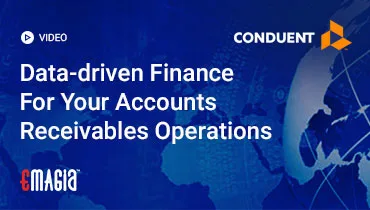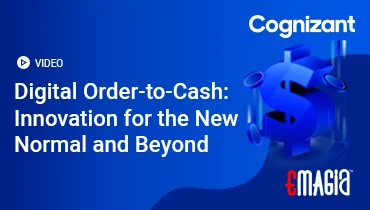Payment posting is a pivotal process in medical billing that ensures accurate financial records, efficient revenue cycle management, and improved patient satisfaction. This comprehensive guide delves into the intricacies of payment posting, its significance, methodologies, challenges, best practices, and the transformative role of technology in optimizing this process.
Understanding Payment Posting in Medical Billing
What is Payment Posting?
Payment posting refers to the process of recording payments received from insurance companies and patients into the healthcare provider’s billing system. This step ensures that the payments are accurately applied to the corresponding patient accounts and services rendered.
Importance of Payment Posting
Accurate payment posting is crucial for:
- Maintaining up-to-date financial records
- Identifying and addressing payment discrepancies
- Enhancing revenue cycle efficiency
- Improving patient satisfaction through transparent billing
The Payment Posting Process: Step-by-Step
1. Receiving Payments
Payments can be received through various channels:
- Insurance Payments: Payments from insurance companies based on claims submitted.
- Patient Payments: Direct payments from patients, including co-pays and deductibles.
- Government Payments: Payments from government programs like Medicare and Medicaid.
- Third-Party Payments: Payments from other entities, such as workers’ compensation.
2. Verifying Payment Information
Ensure that the payment details match the corresponding claims and patient accounts. This includes verifying:
- Payment amount
- Date of payment
- Patient information
- Claim details
3. Applying Payments to Accounts
Once verified, payments are applied to the appropriate patient accounts and services rendered. This step updates the account balances and reflects the payments received.
4. Making Adjustments and Write-Offs
Adjustments may be necessary due to:
- Contractual Adjustments: Differences between billed charges and allowed amounts by insurance.
- Write-Offs: Amounts deemed uncollectible or adjusted based on financial assistance policies.
5. Reconciling Accounts
Reconciliation involves comparing the payments posted in the billing system with bank statements and remittance advice to ensure accuracy and completeness.
6. Handling Denials and Underpayments
Identify and address any denied or underpaid claims by:
- Reviewing denial reasons
- Correcting errors
- Resubmitting claims
- Appealing unfavorable decisions
7. Generating Reports
Produce detailed reports to analyze payment trends, outstanding balances, and overall financial performance. These reports aid in strategic decision-making and identifying areas for improvement.
Methods of Payment Posting
Manual Payment Posting
Involves manually entering payment details into the billing system. Pros: Greater control and oversight. Cons: Time-consuming and prone to human error.
Electronic Payment Posting
Utilizes Electronic Remittance Advice (ERA) to automatically post payments. Pros: Faster processing and reduced errors. Cons: Requires investment in technology and staff training.
Challenges in Payment Posting
- High Volume of Transactions: Managing numerous payments daily can be overwhelming.
- Complex Payment Structures: Dealing with various payment methods and payer requirements.
- Delayed Payments: Late payments can disrupt cash flow.
- Technological Limitations: Inadequate systems can hinder efficiency.
- Compliance Issues: Ensuring adherence to regulations and payer contracts.
Best Practices for Efficient Payment Posting
- Implement Automation: Use advanced billing software to streamline processes.
- Regular Training: Keep staff updated on best practices and system updates.
- Standardize Procedures: Develop consistent workflows for payment posting.
- Conduct Regular Audits: Identify and rectify discrepancies promptly.
- Enhance Communication: Maintain open lines with payers and patients to resolve issues swiftly.
Leveraging Technology in Payment Posting
Adopting modern technology can significantly enhance payment posting efficiency:
- Automated Data Entry: Reduces manual errors and speeds up processing.
- Real-Time Updates: Provides immediate visibility into payment statuses.
- Advanced Analytics: Offers insights into payment trends and identifies areas for improvement.
- Integration with Other Systems: Ensures seamless data flow across departments.
How Emagia Transforms Payment Posting
Emagia’s AI-Powered Payment Posting Solutions
Emagia leverages artificial intelligence to revolutionize payment posting processes:
- Intelligent Automation: Automates routine tasks, freeing up staff for more strategic activities.
- Predictive Analytics: Forecasts payment trends and identifies potential issues before they arise.
- Enhanced Accuracy: Reduces errors through machine learning algorithms that continuously improve over time.
- Seamless Integration: Integrates with existing systems for a unified workflow.
Frequently Asked Questions
What is payment posting in medical billing?
Payment posting is the process of recording payments received from insurance companies and patients into the healthcare provider’s billing system, ensuring accurate financial records and efficient revenue cycle management.
Why is payment posting important?
Accurate payment posting is vital for maintaining up-to-date financial records, identifying and addressing payment discrepancies, enhancing revenue cycle efficiency, and improving patient satisfaction through transparent billing.
What are the common methods of payment posting?
The two primary methods are manual payment posting, which involves entering payment details by hand, and electronic payment posting, which uses Electronic Remittance Advice (ERA) to automatically post payments.
How does automation benefit payment posting?
Automation streamlines the payment posting process by reducing manual errors, speeding up processing times, providing real-time updates, and offering advanced analytics for better decision-making.
What challenges are associated with payment posting?
Common challenges include managing a high volume of transactions, dealing with complex payment structures, handling delayed payments, overcoming technological limitations, and ensuring compliance with regulations and payer contracts.
By understanding and implementing efficient payment posting practices, healthcare providers can enhance their financial operations, ensure compliance, and provide better patient experiences.
Popular Blogs
- What is Cash Application Process? Steps, Objectives, and Benefits
- What is Order-to-Cash Process? Challenges and Improvement Tips
- Credit Application Checklist Template: Streamline Your Approval Process
- Pay to the Order of: Understanding and Using Checks
- Automate Invoice Capture: Transforming Invoice Management
- Financial Statement Data Extraction: A Comprehensive Guide
- Streamlining Financial Systems: Automating AR, AP, and Treasury
- Best Accounts Receivable Management Software
- Credit Management Software: An Overview
- Order-to-Cash Automation: Streamline Your Business Processes
- Invoice Data Extraction: Transforming Billing Information Management
- Intelligent Document Processing (IDP): A Complete Guide
- Cash Flow Forecasting Software: A Complete Guide
- AI-powered Collection Management Software: An Overview
- Credit Management Software: Key Features and Benefits
- Electronic Invoice Presentment and Payment (EIPP)
- Invoice Automation Systems: Enhancing Accounts Payable Efficiency
- Purchase Order Extraction: Streamlining Procurement Processes
- Bank Statement Extraction: Optimizing Financial Data
- AR Automation: Revolutionizing Accounts Receivable Management
- Invoice Automation Software: Boosting Business Efficiency
- AI Invoice Processing: Enhancing Accounts Payable
- Bank Statement Processing: A Complete Guide



